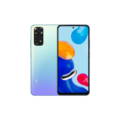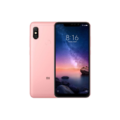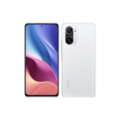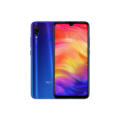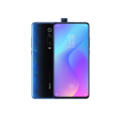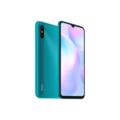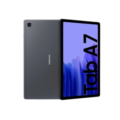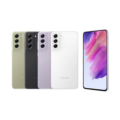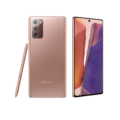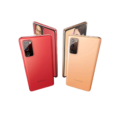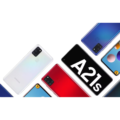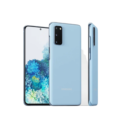Redmi 10 Harga Malaysia
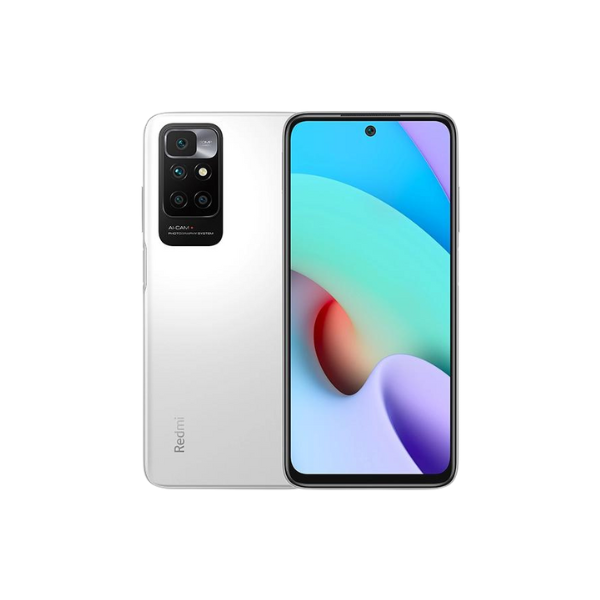

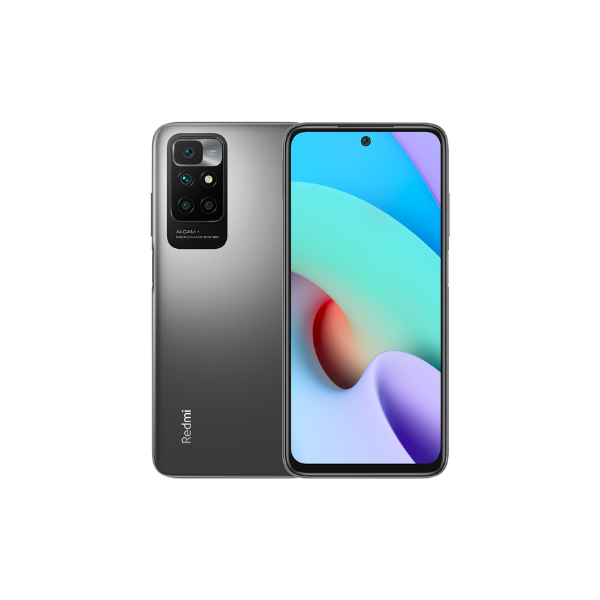
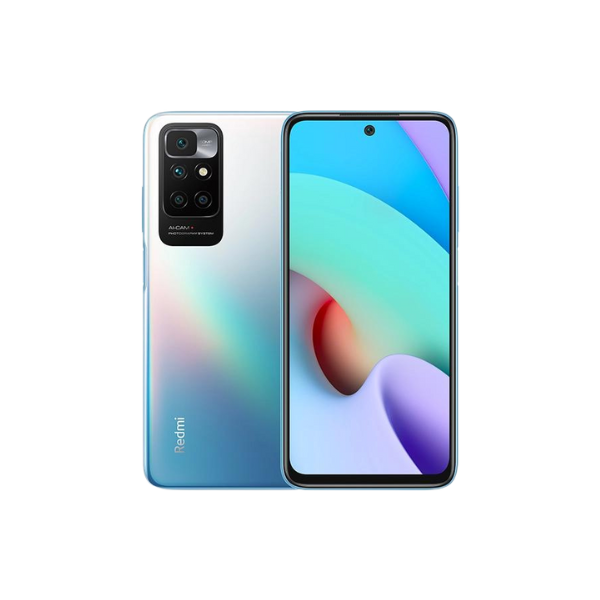
- CPU: MediaTek Helio G88 (12nm)
- RAM: 4 GB, 6 GB
- Storage: 64 GB, 128 GB
- Display: IPS LCD
- Camera: 50 MP Quad Camera
- OS: Android 11, MIUI 12.5
- AnTuTu Total Score: 210000
Redmi 10 Harga Malaysia Spesifikasi Malaysia
General
| Device Type | Smart Phone |
| Model | 21061119AG, 21061119DG, 21061119AL |
| Announced | 18 August, 2021 |
| Released | 20 August, 2021 |
| Status | Available |
| Price | RM649 - RM749 |
Design
| Type <strong>Design Type</strong> called form factor refers to a mobile phone's size, shape, and style as well as the layout and position of major components of phone. There are three major form factors seen in mobile phones => bar phones, folding phones and sliding phones. | Bar |
| Dimensions | 162 x 75.5 x 8.9 mm (6.38 x 2.97 x 0.35 in) |
| Weight | 181 g (6.38 oz) |
| Colors | Carbon Gray, Pebble White, Sea Blue |
Network
| 4G Network | 1, 2, 3, 4, 5, 7, 8, 20, 28, 38, 40, 41 |
| SIM <strong>SIM</strong> (Subscriber Identity Module) is a small card that contains mobile network subscriber's account information. This allows the phone using the card to attach to a mobile network. The SIM card is most commonly associated with GSM and UMTS mobile networks. Moving a SIM card from one phone to another allows a subscriber to switch mobile phones without having to contact their mobile network carrier. SIM cards can also be used by a phone to store limited amounts of data, such as phone numbers and text messages. | Nano SIM |
| Dual SIM | dual stand-by |
Display
| Display Type <strong>Display Technology => </strong> A number of display technologies and types used in mobile phones => TFT (Thin Film Transistor), IPS (In-Place Switching), OLED (Organic Light Emitting Diode), AMOLED (Active-Matrix Organic Light-Emitting Diode), Super AMOLED (an even advanced version of AMOLED), Resistive Touchscreen (Resistive touchscreens contain two layer of conductive material with a very small gap between them which acts as a resistance), Capacitive Touchsceen (Capacitive touchscreen technology consists of a layer of glass coated with a transparent conductor) | IPS LCD |
| Size | 6.5 inches, 102.0 cm2 (~83.4% screen-to-body ratio) |
| Resolution | 1080 x 2400 pixels, 20:9 ratio |
| Display Colors <strong>Display Colors</strong> is refers to the number of different shades of colors that the screen is capable of displaying => 64K colors, 256K colors and 16 million colors, Obviously 16M is highest available range of colors and better than others. | 16 Millions Colors |
| Pixel Density <strong>Pixel Density (PPI)</strong> is refers to the concentration of pixels on a particular display, measured in pixels per inch (ppi). Pixel density is calculated by dividing the diagonal pixel resolution of a display by its diagonal size, higher pixel density better display quality. | (~405 ppi density) |
| Touch Screen | Yes, Multitouch |
| Display Protection <strong>Display Protection => </strong> Gorilla Glass is a special alkali-aluminosilicate glass shield with exceptional damage resistance that helps protect mobile displays from scratches, drops, and bumps of everyday use, It is always better to go for a smartphone with Gorilla Glass for that added protection and peace of mind. | Corning Gorilla Glass 3 |
| Features | 90Hz refresh rate |
Camera
| Rear Camera <strong>Camera</strong> is able to capture photographs and usually videos, The most important characteristics of a camera are the resolution (measured in megapixels), lens focus type (fixed or automatic), higher megapixel cameras are known to capture higher quality photos, but not always a good measurement of the photos quality. |
Quad Camera 50 MP, f/1.8, (wide), PDAF 8 MP, f/2.2, 120˚ (ultrawide) 2 MP, f/2.4, (macro) 2 MP, f/2.4 (depth) |
| Front Camera | 8 MP, f/2.0, (wide), 1/4.0”, 1.12µm, 1080p@30fps |
| Image | 1080p |
| Video | 1080p@30fps |
| Camera Features | LED flash, HDR, panorama |
Software
| Operating System <strong>OS => </strong> Every computer system run on a base software called Operating System (OS). Operating System controls all basic operations of the computer (such as smartphone, PDAs, tablet computers and other handheld devices). The Operating System allows the user to install and run third party applications (apps), apps are used to add new functionality to the device. | Android 11 |
| User Interface <strong>UI</strong> or user interface of a device is the look and feel of the on-screen menu system. How it works, its color scheme, how it responds to button presses, all of these things are part of the user interface. | MIUI 12.5 |
Hardware
| Chipset <strong>Chipset</strong> is a group of integrated circuits designed to perform one or a more dedicated functions, often with real time computing constraints, Popular smartphones are equipped with more advanced embedded chipsets that can do many different tasks depending on their programming. | MediaTek Helio G88 (12nm) |
| CPU <strong>CPU</strong> (Central Processing Unit) mostly known as processors, CPU processes instructions in order to carry out certain functions that make your device operate properly. Processors are often described as the brain of computers, smartphones and tablets, Smartphones and tablets rely on processors to carry out their every task, Processors are an incredibly important factor in selecting any type of computing device, including your smartphone. | Octa-core (2x2.0 GHz Cortex-A75 & 6x1.8 GHz Cortex-A55) |
| GPU <strong>GPU</strong> (Graphics Processing Unit) is a single-chip processor designed to rapidly manipulate and alter memory to accelerate the creation of images in a frame buffer intended for output to a display, This includes things such as lighting effects, object transformations, and 3D motion. | Mali-G52 MC2 |
| RAM (Memory) <strong>RAM</strong> (Random Access Memory) is a type of computer memory that can be accessed randomly, any byte of memory can be accessed without touching the preceding bytes that allows information to be stored and accessed quickly from random locations. RAM is the most common type of memory found in computer systems, smartphones, tablets and other electronic devices. | 4 GB, 6 GB |
| Internal Storage <strong>Internal Storage</strong> is a data storage space (flash memory) mostly used in smartphones, tablets and other electronic devices where operating system, apps, music, photos, videos, files and other user data Is stored. | 64 GB. 128 GB |
| Card Slot <strong>Memory Card Slot</strong> is a special slot for inserting a memory card. Memory cards allow you to expand the phone's built-in memory, A memory card (sometimes called a flash memory card or a storage card) is a small storage medium used to store data such as text, pictures, audio, and video, for use on small, portable or remote computing devices such as mobile phones, mp3 players, digital cameras. | microSDXC (dedicated slot) |
| Sensors <strong>Sensors</strong> are electronic components that detects and responds to some type of input from the physical environment. The specific input could be light, heat, motion, moisture, pressure and location, The output is generally a signal that is converted to use in computing systems, a location sensor, such as a GPS receiver is able to detect current location of your electronic device. | Fingerprint (side-mounted), accelerometer, proximity, compass |
Battery
| Battery Type <strong>Battery Type => </strong> Cell phones run on various kinds of batteries depending on the manufacturer, phone size or shape and features. There are basically four types of cell phone batteries => Lithium Polymer, Lithium Ion, Nickel Metal Hydride and Nickel Cadmium. | Li-Poly (Lithium Polymer) |
| Placement | non-removable |
| Capacity <strong>Battery Capacity</strong> is a measure (typically in Amp-hr) of the charge stored by the battery, and is determined by the mass of active material contained in the battery. The battery capacity represents the maximum amount of energy that can be extracted from the battery under certain conditions. | 5000 mAh |
| Charging | 18W wired, 9W reverse wired |
Connectivity
| Bluetooth <strong>Bluetooth</strong> is a wireless communications technology for exchanging data between mobile phones, headsets, computers and other network devices over short distances without wires, Bluetooth technology was primarily designed to support simple wireless networking of personal consumer devices. | 5.1, A2DP, LE |
| Wi-fi <strong>Wi-Fi</strong> is a popular wireless networking technology using radio waves to provide high-speed network connections that allows devices to communicate without cords or cables, Wi-Fi is increasingly becoming the preferred mode of internet connectivity all over the world. | Wi-Fi 802.11 a/b/g/n/ac, dual-band, Wi-Fi Direct |
| Wi-fi Hotspot | |
| USB | USB Type-C 2.0 |
| GPS <strong>GPS</strong> The Global Positioning System is a satellite-based radio navigation system, GPS permits users to determine their position, velocity and the time 24 hours a day, in all weather, anywhere in the world, In order to locate your position, your device or GPS receiver must have a clear view of the sky. | GPS, GLONASS, GALILEO, BDS |
| NFC <strong>NFC</strong> (Near field communication) is a set of standards for smartphones and similar devices to establish peer-to-peer radio communications with each other by touching them together or bringing them into proximity, usually no more than a few inches. | |
| Wireless Charging <strong>Wireless Charging</strong> (Inductive Charging) uses an electromagnetic field to transfer energy between two objects. This is usually done with a charging station. Energy is sent through an inductive coupling to an electrical device, which can then use that energy to charge batteries or run the device. | No |
Media
| Loudspeaker | Yes, with stereo speakers |
| Handsfree | 3.5mm jack |
Harga bagi Xiaomi Redmi 10 ini dianggap lebih mahal daripada keluaran sebelumnya, iaitu USD 179 atau sekitar RM 649 untuk 64GB storan, dan USD 199 atau sekitar RM 889 untuk 128GB storan. Terdapat juga versi dengan storan 128GB dan RAM 6GB yang dijual pada harga USD 219 atau sekitar RM 749.
Reka Bentuk dan Pembinaan
- Android dengan saiz sederhana, berbanding kebanyakan Xiaomi
- Reka bentuk plastik yang kelihatan seperti logam dan kaca
- Menggunakan reka bentuk lubang pukulan daripada reka bentuk titisan
Berbeza daripada Redmi 9 dengan reka bentuk titisan, spesifikasi Redmi 10 menggunakan reka bentuk lubang pukulan yang lebih moden menurut kebanyakan orang.
Rangka yang berpatutan dan mudah digunakan berbanding beberapa Xiaomi lain. Redmi 10 dilengkapi dengan skrin saiz 75.5mm yang agak selesa dilihat.
Terdapat sistem keselamatan pengunci cap jari di sisi telefon pintar ini, walaupun pengoperasian sistem ini mengambil sedikit lebih lama daripada model yang lebih tinggi, tetapi ia masih boleh diandalkan.
Terdapat juga Pemancar Inframerah (IR Blaster) pada peranti Xiaomi Redmi 10 yang mungkin terdapat dalam banyak telefon hasilan China yang telah muncul baru-baru ini.
Paparan
- Resolusi 1080p LCD dan saiz 6.5 inci
- Kadar segar sehingga 90Hz ditambah dengan penghemat bateri 60Hz
- Mod turbo meningkatkan kecerahan kepada 445 nit yang selamat untuk penggunaan di luar
Kemampuan Redmi 10 bukanlah paten 90 Hz, tetapi anda boleh mengubahnya kepada 60 Hz atau lebih mengikut keperluan kelajuan yang anda mahukan.
Pada harga ini, penampilan berdasarkan ulasan Redmi 10 dianggap cukup baik, walaupun tidak sempurna. Penggunaan LCD menjadikan kuasa atau penampilan dalam bilik gelap tidak begitu jelas atau optimal. Ini bukanlah masalah besar bagi sesetengah orang.
Redmi 10 mampu mencapai 445 nit pada penggunaan di luar dan dalam cahaya matahari terang. Walaupun kualiti ini cukup baik untuk harga yang begitu rendah, ia masih jauh daripada dibandingkan dengan Redmi 10 Pro.
Kamera
- Penderia dengan kapasiti 50MP boleh berfungsi dengan normal, tetapi seringkali tidak optimal
- Video dengan resolusi 1080p 30fps tidak ditunjukkan secara stabil
- Kamera dengan saiz yang terlalu luas dan kualiti ketiga tidak begitu baik
Mod HDR boleh menjadi rumit untuk digunakan kadang-kadang, walaupun dalam mod auto ia tidak dapat menghasilkan hasil yang sangat baik. Oleh itu, adalah biasa untuk orang masih memerlukan bantuan daripada aplikasi penyuntingan foto untuk membuat kualiti foto daripada kamera menjadi lebih baik.
Mod HDR biasanya digunakan untuk meningkatkan kualiti imej, tetapi ia tidak berfungsi dengan baik dan kadang-kadang memaparkan kualiti imej yang tidak jauh daripada yang dihasilkan oleh kamera hadapan berbanding kamera utama.
Pengaturan warna pada Redmi 10 juga dianggap lemah dan sukar untuk digunakan untuk mengambil gambar suasana semasa matahari terbenam.
Foto mod malam juga tidak lebih baik daripada foto yang diambil menggunakan mod automatik. Seringkali imej kelihatan terlalu kabur dan hanya kelihatan gelap.
Perisian
- Versi MIUI pada Redmi 10 sering mencipta masalah
- Perisian teras menggunakan jenis Android 11
- Sedikit kelambatan adalah biasa
Pada umumnya, prestasi Redmi 10 4G agak baik dengan kelas CPU yang agak tinggi. Apabila anda kembali ke aplikasi yang baru dibuka, biasanya ia akan mengambil sedikit masa disebabkan kesan penyesuaian cache.
Pada umumnya, proses antara muka juga sering melambat. Masih ada beberapa kelambatan yang boleh berlaku tetapi kita akan membincangkannya kemudian.
Prestasi
- Salah satu telefon dengan keupayaan bermain permainan yang agak rendah berbanding peranti yang mempunyai julat harga yang sama
- Pembesar stereo yang mengeluarkan bunyi yang tidak begitu baik
- Dari segi prestasi hampir tidak ada peningkatan berbanding keluaran sebelumnya
Hayat Bateri
- Kapasiti bateri 5000mAh dan kapasiti pengecasan 18W
- Hayat bateri yang baik dalam penggunaan normal
- Salah satu telefon daripada Xiaomi dengan pengecasan yang cukup cepat
Harga
Anda boleh mendapatkan Redmi 10 pada harga USD 179 atau harga Redmi 10 di Malaysia pada tahun 2024 adalah sekitar RM 649 untuk 64GB storan dan 128GB storan. Terdapat juga versi dengan storan 128GB dan RAM 6GB yang dijual pada harga USD 219 atau sekitar RM 749. Terdapat perbezaan harga yang agak ketara bagi Redmi 10 6GB 128GB.
Anda boleh melawat kedai rasmi Xiaomi di Lazada
Soalan Lazim
Bagaimana dengan hayat bateri Xiaomi Redmi 10?
Hayat bateri bagi Xiaomi Redmi 10 yang terdapat dalam semua warna Redmi 10 dianggap baik dan mampu bertahan selama 2 hari dalam penggunaan normal.
Apakah spesifikasi prestasi Xiaomi Redmi 10?
Telefon pintar Xiaomi ini menggunakan sistem storan eMMC yang dianggap agak perlahan dalam kelajuan, walaupun dilengkapi dengan kelajuan baca hingga 283MB/s dan kelajuan tulis hingga 152MB/s, tetapi penilaian ini tidak terlalu buruk.
Bagaimanakah kualiti kamera Xiaomi Redmi 10?
Kualiti kamera tidak boleh dianggap sangat baik dan masih memerlukan penambahbaikan. Walaupun ia disokong oleh kemahiran fotografi yang berkualiti, kelihatan bahawa itu tidak akan mencukupi.

